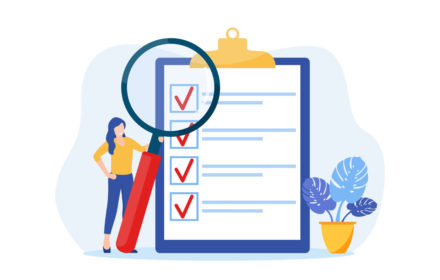The Removal of Cookies: A Glossary of Terms You Should Know

The removal of cookies is a hot topic in the marketing world – and for good reason.
By 2023, marketers will no longer be able to use third party cookies for advertising purposes – leaving many scrambling to find a solution to ensure their marketing effectiveness doesn’t take a dip in the same way many have seen as a result of the recent iOS14 changes from Apple.
And with another big change, come more new terms marketers need to add to their already extensive vocabulary.
So, to make your life easier, we’ve pulled together a list of some of the most important terms you should know. With our straightforward explanations, you can get set up to take on this impending change with confidence.
Select the marketing term below to navigate to its definition:
- Containerisation
- Cookie Blocking
- Fingerprinting
- First-Party Cookie
- First-Party Data
- FLoC (Federated Learning of Cohorts)
- Identifier
- Identity Graph
- Privacy Sandbox Initiative
- Third-Party Cookie
Containerisation
The lines between marketing and technology are becoming increasingly blurred – and with that comes a whole host of technological terms we need to learn.
And here’s just another one to add to the list – but what does containerisation mean?
In simple terms, it can be thought of as a twist on on-premise software. Instead of sending physical servers to run technology, the technology is ‘containerised’ and can be deployed in a private cloud, controlled entirely by the enterprise.
It’s a concept that’s been in the IT and software development realms for a while, but now containerisation is something marketers will need to familiarise themselves with as it is increasingly viewed as the way forward as we move to a first-party data focused world.
Containerisation allows the enterprise to truly own its insights and control who can access the tech stacks inside the container, eliminating concerns that first-party data could be misused.
Cookie Blocking
Cookie blocking is when a cookie script is blocked from running on a given user’s browser.
Cookie blocking can happen at browser-level or at the website-level. At both levels, cookie blocking is either done automatically until users consent to non-essential cookies, or cookie blocking is determined by users’ cookie settings.
Fingerprinting
Fingerprinting is a method of online tracking used to identify users who have interacted with certain marketing touchpoints. It uses publicly available device or user attributes to create a ‘fingerprint’, which can then be matched to subsequent visits.
However, as accurate fingerprinting relies on third-party cookies to collect data, it’s likely to become a redundant method of tracking following the impending death of third-party cookies.
There are two main types of fingerprinting: device-led fingerprinting and canvas fingerprinting.
Device-led Fingerprinting
Device-led fingerprinting focuses on device data (i.e. mobiles, laptops, etc.), identifying unique attributes for each device that it can match to future interactions and visits.
Canvas Fingerprinting
Canvas fingerprinting tracks user browser behaviour by allowing websites to identify and track visits using the HTML5 canvas element.
When a user visits a website, their browser is instructed to ‘draw’ a hidden line of text or 3D token that is used to measure the characteristics of their GPU model, operating system, and overall system performances. This unique data generates a ‘digital token’ that’s used to identify the user for future visits.
First-Party Cookie
First and third-party cookies (which we’ll look at later in this blog) are both used to track user behaviour. They have similar purposes but are collected and used in different ways.
First-party cookies are owned by the publisher or website owner and are directly stored by the website (or domain).
These cookies allow website owners to:
- collect analytics data,
- remember language settings,
- and perform other useful functions that provide a good user experience.
An example of first-party cookie usage
For example, each time you visit your favourite online clothing store, it’s likely you will still be signed into your account with your favourite garments saved, your search preferences and even have some items left in your basket.
This is because the website has used a first-party cookie to store your information. If first-party cookies were blocked (see: cookie blocking), you would have to sign-in each time you visited that online store, and you wouldn’t be able to purchase multiple items while shopping online because the cart would reset after every item that was added.
First-Party Data
First-party data is information collected from a business (and its activities), for that business, by that business.
This commonly refers to details about audiences or customers, but also covers performance of marketing strategies and advertising campaigns.
Some common sources include:
- CRM
- website
- mobile app
- customer feedback
- e-commerce platform
First-party data is owned by a brand which has complete control over how it is collected, processed, and used. Information is unique to that business and generally the most accurate type of data.
With the removal of cookies, businesses are looking to create a robust first-party data strategy by incentivising customers and prospects to share the right information with them in order to re-target without the need for third-party cookies.
FLoC (Federated Learning of Cohorts)
The Federated Learning of Cohorts (FLoC) is a privacy-focused solution for delivering relevant ads “by clustering large groups of people with similar interests”.
Essentially, FLoC groups you with other people that may have similar interests to you.
This is still based on your browsing history but instead of using cookies to send it to third-parties, the browser looks at your history and decides what you might be interested in.
Accounts are anonymised, grouped into interests, and more importantly, user information is processed on-device rather than broadcast across the web.
This new approach promises to change the focus to more of a cohort-based approach which dispenses with the idea of one-to-one personalisation – and focusing on broader targeting.
According to Google, it currently delivers 95% of the conversions per dollar spent when compared to cookie-based advertising. However, the effectiveness varies by the strength of the clustering algorithm and the strength of the targeted interest.
Identifier
As the terms suggests, identifiers are a host of online behaviours that can be used to ‘identify’ a specific user. These are then ‘stitched’ together to (in theory) create a view of a customer (see: Identity Graph).
Identifiers include:
- device identity,
- browser behaviour,
- transactions,
- and other contextual data that help connect the same individual across devices, platforms, and channels.
Identity Graph
An identity graph, or ID graph, is a database that houses all the known identifiers that correlate with individual customers.
These identifiers include PIIs (Personal Identifiable Information) and other digital and device identities such as:
- username
- phone number
- IP address
- cookies
- physical address
Privacy Sandbox Initiative
The Priviacy Sandbox Initiative is Google’s replacement for third-party cookies.
Part of a wider, collaborative industry-level exploration on options following the end of third-party cookies, the Google Privacy Sandbox Initiative is linked to investigating the use of cohort-based advertising (which we covered earlier).
Essentially the premise is to create web technologies that balance the often conflicting needs to protect people’s online privacy and – at the same time – give marketers the tools they need to continue to be targeted in the way that they create and measure digital campaigns.
Chetna Bindra, group product manager user trust and privacy at Google, says:
“We are more confident than ever that the Privacy Sandbox is the best path forward to improve privacy for web users while ensuring publishers can earn what they need to fund great content and advertisers can reach the right people for their products.”
Third-Party Cookie
Earlier in the blog, we covered first-party cookies but what’s the difference between those and third-party cookies?
Unlike first-party cookies, third-party cookies are created by domains that are not the website (or domain) that you are visiting.
Third-party cookies are primarily used for:
- personalisation
- audience targeting
- measurement
- attribution.
An example of third-party cookie usage
Similar to the example for first-party cookies, you had visited your favourite online clothing store and had a browse on the website for a while but then decided you didn’t want to purchase anything right now. You click off and begin searching for something else. You then notice that, as you browse different websites, you are now being targeted by Google Display ads for the clothing store and items you previously viewed but didn’t purchase.
Achieving Success in a Cookieless World
We hope this glossary has helped you gain a better understanding of the different elements involved with this impending change.
If you’d like to learn more about the steps you should be taking now to get prepared for the cookieless world, download our eBook below. Or, for a no-obligation chat about how we can help, get in touch here.
How to Achieve Marketing Success in a Cookieless World
Own your marketing data & simplify your tech stack.
Have you read?
Chrome’s announcement on dropping cookie opt-in last month closed the door on a 5 year saga for marketers. But what is the landscape like in 2025 for cookie-based measurement?
Generative AI is transforming the way that marketers plan and assemble content for their Paid Ads. As big platforms like Google, Meta and TikTok increasingly build the tools needed to...
In a surprising move that has sparked heated debate, Mark Zuckerberg announced on his Instagram that Meta will be reducing its levels of censorship and in particular fact-checking on its...



